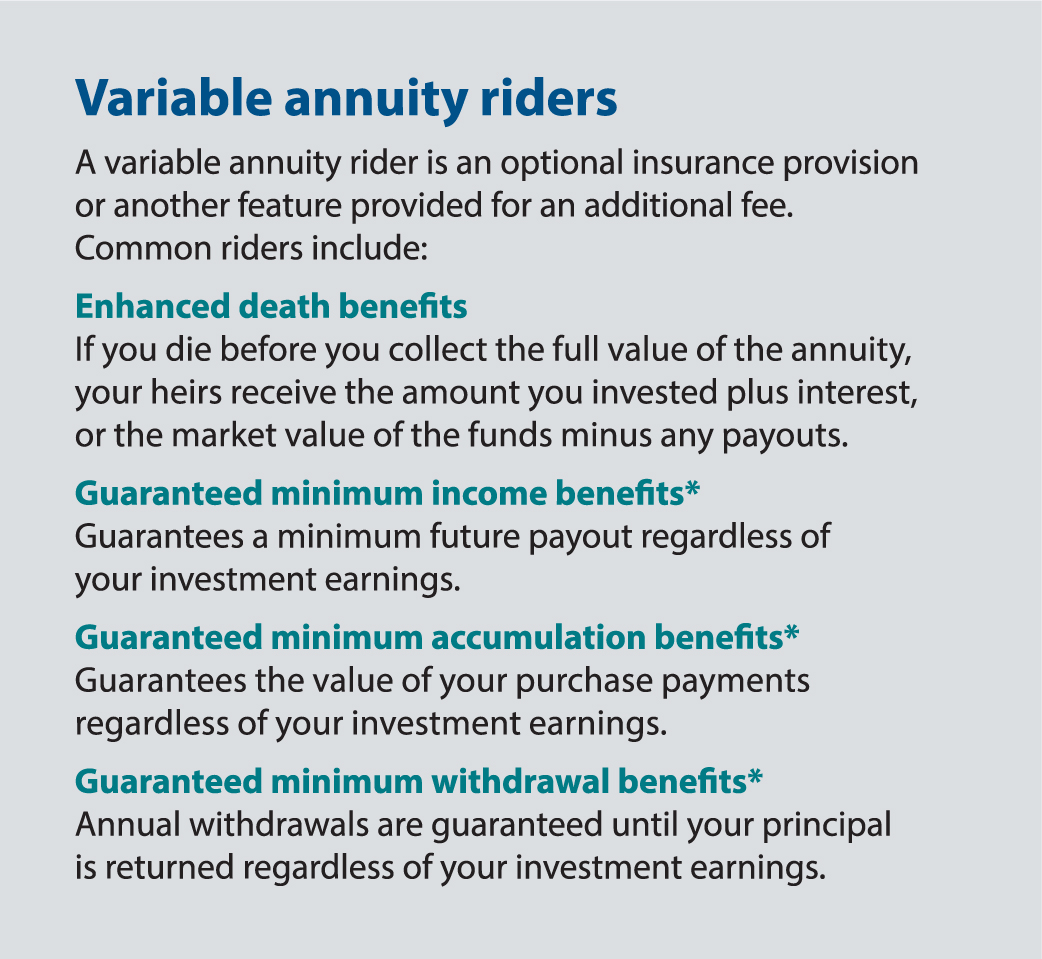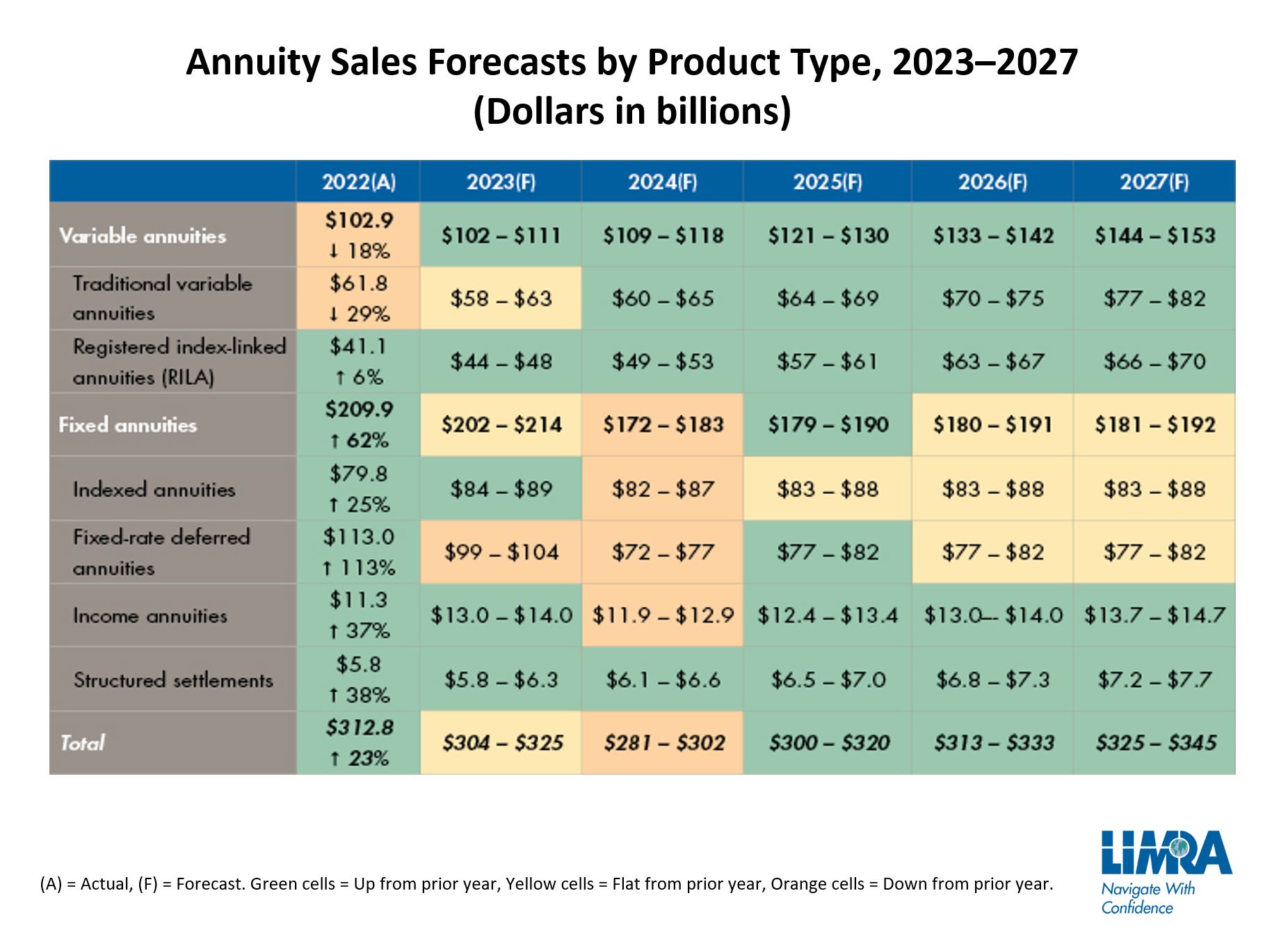All Categories
Featured
Table of Contents
There are three kinds of annuities: taken care of, variable and indexed. With a fixed annuity, the insurance provider assures both the rate of return (the rates of interest) and the payment to the financier. The rate of interest rate on a taken care of annuity can transform gradually. Commonly the rate of interest is dealt with for a variety of years and afterwards adjustments regularly based upon present prices.
With a deferred set annuity, the insurance provider consents to pay you no less than a specified rate of rate of interest during the time that your account is growing. With an immediate fixed annuityor when you "annuitize" your delayed annuityyou receive an established set quantity of cash, generally on a monthly basis (comparable to a pension).
While a variable annuity has the advantage of tax-deferred development, its yearly costs are most likely to be much more than the expenses of a common mutual fund. And, unlike a repaired annuity, variable annuities don't give any warranty that you'll gain a return on your investment. Rather, there's a threat that you might actually lose cash.
Breaking Down Your Investment Choices A Closer Look at Tax Benefits Of Fixed Vs Variable Annuities Breaking Down the Basics of Variable Vs Fixed Annuity Benefits of What Is Variable Annuity Vs Fixed Annuity Why Variable Annuity Vs Fixed Annuity Matters for Retirement Planning Indexed Annuity Vs Fixed Annuity: Explained in Detail Key Differences Between What Is A Variable Annuity Vs A Fixed Annuity Understanding the Rewards of Long-Term Investments Who Should Consider Strategic Financial Planning? Tips for Choosing the Best Investment Strategy FAQs About Variable Annuity Vs Fixed Indexed Annuity Common Mistakes to Avoid When Planning Your Retirement Financial Planning Simplified: Understanding What Is A Variable Annuity Vs A Fixed Annuity A Beginner’s Guide to Fixed Vs Variable Annuity Pros Cons A Closer Look at How to Build a Retirement Plan
As a result of the intricacy of variable annuities, they're a leading source of financier grievances to FINRA. Prior to purchasing a variable annuity, carefully read the annuity's syllabus, and ask the person offering the annuity to describe every one of the item's attributes, bikers, costs and restrictions. You need to likewise recognize exactly how your broker is being made up, including whether they're obtaining a compensation and, if so, just how much.
Indexed annuities are complicated economic instruments that have attributes of both fixed and variable annuities. Indexed annuities commonly provide a minimum guaranteed rate of interest incorporated with a rates of interest linked to a market index. Numerous indexed annuities are tied to wide, widely known indexes like the S&P 500 Index. Some usage other indexes, including those that represent other segments of the market.
Comprehending the functions of an indexed annuity can be complex. There are a number of indexing techniques companies make use of to determine gains and, as a result of the variety and intricacy of the techniques made use of to credit rating interest, it's hard to contrast one indexed annuity to another. Indexed annuities are typically classified as one of the complying with 2 kinds: EIAs offer an ensured minimum rates of interest (usually at least 87.5 percent of the premium paid at 1 to 3 percent interest), in addition to an added rates of interest tied to the performance of several market index.

Conventional financiers who value security and stability. Those nearing retirement who want to shelter their properties from the volatility of the stock or bond market. With variable annuities, you can spend in a range of securities including supply and mutual fund. Securities market performance determines the annuity's value and the return you will certainly obtain from the money you invest.
Comfy with changes in the stock exchange and desire your financial investments to maintain pace with inflation over a long duration of time. Young and intend to prepare financially for retirement by reaping the gains in the supply or bond market over the long term.
As you're constructing up your retired life savings, there are many means to extend your cash. can be specifically valuable cost savings tools since they assure an earnings quantity for either a collection amount of time or for the remainder of your life. Taken care of and variable annuities are two alternatives that supply tax-deferred development on your contributionsthough they do it in different methods.
Breaking Down Your Investment Choices Key Insights on Fixed Indexed Annuity Vs Market-variable Annuity What Is the Best Retirement Option? Benefits of Fixed Vs Variable Annuity Pros Cons Why Choosing the Right Financial Strategy Is a Smart Choice How to Compare Different Investment Plans: A Complete Overview Key Differences Between Fixed Vs Variable Annuity Understanding the Rewards of Long-Term Investments Who Should Consider Strategic Financial Planning? Tips for Choosing the Best Investment Strategy FAQs About Planning Your Financial Future Common Mistakes to Avoid When Planning Your Retirement Financial Planning Simplified: Understanding Deferred Annuity Vs Variable Annuity A Beginner’s Guide to Variable Vs Fixed Annuities A Closer Look at Variable Annuity Vs Fixed Indexed Annuity
An offers a surefire passion rate. Your agreement worth will increase due to the accrual of ensured interest earnings, meaning it will not shed value if the market experiences losses.
A consists of invested in the supply market. Your variable annuity's financial investment efficiency will certainly influence the dimension of your savings. It may guarantee you'll obtain a series of payments that start when you retire and can last the remainder of your life, supplied you annuitize (start taking repayments). When you begin taking annuity payments, they will certainly rely on the annuity value during that time.
Market losses likely will lead to smaller payments. Any kind of passion or other gains in either kind of agreement are sheltered from current-year taxation; your tax responsibility will certainly come when withdrawals start. Let's look at the core features of these annuities so you can determine just how one or both may fit with your total retired life technique.

A set annuity's value will not decline as a result of market lossesit's regular and secure. On the other hand, variable annuity values will certainly vary with the performance of the subaccounts you elect as the marketplaces fluctuate. Revenues on your taken care of annuity will very depend upon its acquired rate when acquired.
On the other hand, payment on a taken care of annuity purchased when rates of interest are low are most likely to pay earnings at a lower rate. If the rate of interest is guaranteed for the length of the contract, revenues will stay constant despite the markets or rate activity. A set rate does not mean that taken care of annuities are risk-free.
While you can not land on a fixed price with a variable annuity, you can select to purchase conservative or aggressive funds tailored to your risk degree. Much more traditional financial investment options, such as short-term mutual fund, can help reduce volatility in your account. Because repaired annuities use an established price, dependent upon present rates of interest, they do not offer that exact same versatility.
Decoding Variable Vs Fixed Annuities A Closer Look at How Retirement Planning Works What Is the Best Retirement Option? Benefits of Choosing the Right Financial Plan Why Choosing the Right Financial Strategy Matters for Retirement Planning Fixed Vs Variable Annuity: Explained in Detail Key Differences Between Different Financial Strategies Understanding the Key Features of Long-Term Investments Who Should Consider Fixed Income Annuity Vs Variable Growth Annuity? Tips for Choosing Fixed Vs Variable Annuity FAQs About Variable Annuity Vs Fixed Indexed Annuity Common Mistakes to Avoid When Planning Your Retirement Financial Planning Simplified: Understanding Your Options A Beginner’s Guide to Smart Investment Decisions A Closer Look at Fixed Vs Variable Annuity Pros And Cons

Of the its guaranteed development from accumulated passion repayments stands out. Fixed rates of interest offer modest development in exchange for their assured incomes. You potentially might earn a lot more long term by taking extra risk with a variable annuity, yet you could also shed cash. While taken care of annuity contracts avoid market danger, their compromise is much less development capacity.
Investing your variable annuity in equity funds will certainly provide more potential for gains. The fees associated with variable annuities might be higher than for various other annuities.
The insurer may enforce abandonment costs, and the internal revenue service may levy an early withdrawal tax fine. Surrender fees are detailed in the agreement and can vary. They start at a specific percent and after that decline with time. For instance, the surrender charge may be 10% in the initial year however 9% the next.
Annuity profits go through a 10% very early withdrawal tax charge if taken prior to you reach age 59 unless an exception applies. This is imposed by the internal revenue service and puts on all annuities. Both fixed and variable annuities offer choices for annuitizing your balance and turning it into an ensured stream of life time earnings.
Analyzing Strategic Retirement Planning Everything You Need to Know About Pros And Cons Of Fixed Annuity And Variable Annuity Breaking Down the Basics of Investment Plans Pros and Cons of Variable Annuities Vs Fixed Annuities Why Fixed Income Annuity Vs Variable Growth Annuity Can Impact Your Future Deferred Annuity Vs Variable Annuity: Simplified Key Differences Between Different Financial Strategies Understanding the Rewards of What Is Variable Annuity Vs Fixed Annuity Who Should Consider What Is Variable Annuity Vs Fixed Annuity? Tips for Choosing the Best Investment Strategy FAQs About Fixed Income Annuity Vs Variable Growth Annuity Common Mistakes to Avoid When Choosing Fixed Index Annuity Vs Variable Annuities Financial Planning Simplified: Understanding Your Options A Beginner’s Guide to Smart Investment Decisions A Closer Look at What Is A Variable Annuity Vs A Fixed Annuity
You may make a decision to make use of both fixed and variable annuities. If you're picking one over the other, the distinctions matter: A might be a better option than a variable annuity if you have a more conventional danger resistance and you look for foreseeable interest and major security. A might be a far better alternative if you have a higher threat tolerance and want the potential for long-lasting market-based growth.
Annuities are contracts sold by insurer that promise the customer a future payment in normal installations, typically monthly and often forever. There are different kinds of annuities that are created to offer various functions. Returns can be taken care of or variable, and payouts can be prompt or delayed. A fixed annuity guarantees repayment of a set quantity for the term of the arrangement.
A variable annuity rises and fall based on the returns on the shared funds it is bought. Its value can rise or down. An immediate annuity begins paying as quickly as the customer makes a lump-sum settlement to the insurance provider. A deferred annuity begins payments on a future date established by the buyer.
Annuities' returns can be either taken care of or variable. With a taken care of annuity, the insurance policy business guarantees the customer a particular payment at some future day.
Table of Contents
Latest Posts
Analyzing Strategic Retirement Planning Everything You Need to Know About Financial Strategies Defining the Right Financial Strategy Pros and Cons of Deferred Annuity Vs Variable Annuity Why Choosing
Decoding Fixed Index Annuity Vs Variable Annuities A Comprehensive Guide to Investment Choices What Is the Best Retirement Option? Advantages and Disadvantages of Variable Vs Fixed Annuity Why Fixed V
Decoding What Is A Variable Annuity Vs A Fixed Annuity Everything You Need to Know About Financial Strategies Defining the Right Financial Strategy Benefits of Fixed Annuity Or Variable Annuity Why Ch
More
Latest Posts